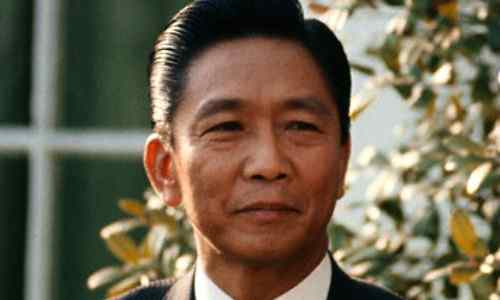Former senator Ferdinand Marcos Jr. revealed yesterday that his father, former president Ferdinand Marcos, will be buried at the Libingan ng mga Bayani on September 18. The announcement comes after debates whether the former president should be interred at the national cemetery reserved for Filipino military personnel, martyrs, and heroes.
But the National Historical Commission of the Philippines (NHCP) isn’t having it. The government agency, which is in charge of “promoting Philippine history and cultural heritage through research, dissemination, conservation, sites management and heraldry works,” published a 17-page treatise on why Marcos shouldn’t be buried there. NHCP also published a condensed version on Facebook, which you can read below:
Why Ferdinand E. Marcos Should Not be Buried at Libingan ng mga Bayani
President Rodrigo R. Duterte proposes to bury Mr. Ferdinand E. Marcos at the Libingan ng mga Bayani (LNMB) because he “was a Filipino soldier, period.” The NATIONAL HISTORICAL COMMISSION OF THE PHILIPPINES (NHCP) objects to the burial of Mr. Marcos at the LNMB based on his record as a soldier. The NHCP study demonstrates that:
1. Mr. Marcos lied about receiving the U.S. Medal of Honor, Silver Star, and Order of the Purple Heart, which he claimed as early as about 1945.2. His guerrilla unit, the Ang Mga Maharlika, was never officially recognized and neither was his leadership of it.3. U.S. officials did not recognize Mr. Marcos’s rank promotion from Major in 1944 to Lt. Col. by 1947.4. Some of Mr. Marcos’s actions as a soldier were officially called into question by upper echelons of the U.S. military, such as his command over the Allas Intelligence Unit (described as “usurpation”), his commissioning of officers (without authority), his abandonment of USAFIP-NL presumably to build an airfield for Gen. Roxas, his collection of money for the airfield (described as “illegal”), and his listing of his name on the roster of different units (called a “malicious criminal act”).Mr. Marcos’s military record is fraught with myths, factual inconsistencies, and lies. The rule in history is that when a claim is disproven—such as Mr. Marcos’s claims about his medals, rank, and guerrilla unit—it is simply dismissed. When, moreover, a historical matter is under question or grave doubt, as expressed in the military records about Mr. Marcos’s actions and character as a soldier, the matter may not be established or taken as fact. A doubtful record also does not serve as sound, unassailable basis of historical recognition of any sort, let alone burial in a site intended, as its name suggests, for heroes.For these reasons, the NATIONAL HISTORICAL COMMISSION OF THE PHILIPPINES opposes the plan to bury Mr. Marcos at the Libingan ng mga Bayani.The COMMISSION undertook this study as part of its mandate to conduct and disseminate historical research and resolve historical controversies. (Section 5 and 7, R.A. 10086).
Do you agree? Should Marcos be buried at Libingan ng mga Bayani or not? Share your thoughts below!
Follow When in Manila Koji for more stories like this!





